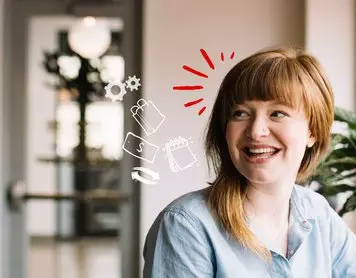What is your most valuable asset when it comes to your savings? This one may surprise you.
We think of assets as those things that we can put a value on. Maybe it’s a savings or retirement account. Maybe it’s a piece of property that you have or your great grandfather’s gold cufflinks. Maybe it’s that velvet Elvis painting that you bought at a garage sale that you are absolutely sure will be revealed as a priceless work of art when Antiques Roadshow comes through town.
While those are nice, your most valuable asset may just be something that is a little harder to put a dollar sign in front of. What is this mysterious asset?
Time.
Compounding interest + time = magic
Time is powerful because it boosts the magic of compounding interest. What is compounding interest? It’s when you’re not only earning interest on your money, but you’re earning interest on your interest.
That can sound a little confusing, so let’s break it down.
Let’s say you have $2,000 that you put into a savings account that pays you 2.5% at the end of the year*. After that one year, you would have $2,050. That’s 50 bucks for doing absolutely nothing. Sweet!
So at the end of the second year, you’d have another 50 bucks for a total of $2,100, right? Nope. You’d have $2,101.25. Wait a minute. What? There is an extra $1.25 in there. Yep, that is you earning interest on your interest. At the end of year one, you had $2,050. At the end of year two, you would have earned 2.5% again. Except, this time, you’re earning 2.5% on your original $2,000 + 2.5% on that $50 you earned the first year. ($2,050 x 2.5% = $2,101.25). That’s earning interest on your money + earning interest on your interest.
Now, you may be saying, “What’s the big deal about $1.25?” When you let time work its magic, that $1.25 balloons.
For example, let’s say you didn’t have compounding interest. If you earned 2.5% on just your original $2,000, you’d have $2,500 after 10 years ($2,000 x 2.5% x 10 years = $2,500)
But when you start earning interest on interest on interest on interest, you get a bonus. After 10 years, you would have 2,560.15. Not only would you earn $500 for doing absolutely nothing. That $1.25 would have grown to $60.17 at the end of 10 years because of compounding interest. That is a mighty leap. That’s why time is such a precious asset. It allows compound interest to do its voodoo.
It gets even better
The example we just went through had us putting $2,000 in an account and then us doing nothing else. It had us earning 2.5% with the interest figured at the end of the year.
Now picture this. We contribute $50 or even $100 each month. And the interest is figured at the end of each month (which is pretty common) instead of at the end of the year. Now, things really start to jump up.
Here’s what we would have: $100 monthly contribution x 12 months + our original $2,000 + our monthly compounding interest.
At the end of one year, we would have $3,266.97!
What happens if we continue that for 10 years? We would have $16,212.95!!
That’s what happens when you give compounding interest your most valuable asset - time. And then let it earn you interest on your interest on your interest.
To run your own calculations, check out this compound interest calculator. But don’t wait. Your time is too precious.
*Interest compounding yearly.







